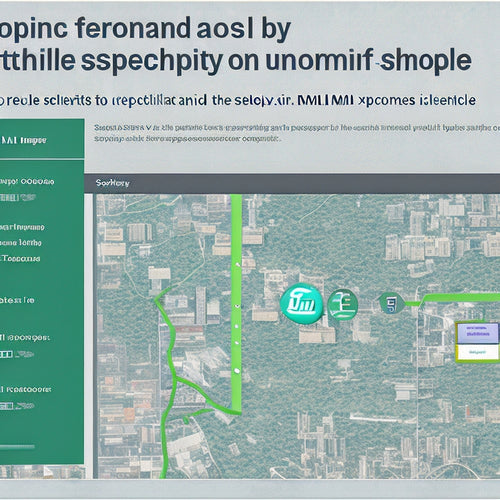
Profit From Your Art: Master Online Sales
Share
You're ready to turn your artistic passion into a profitable online business, leveraging the global art market's projected growth to $1.57 billion by 2023. You'll need to explore online opportunities, build a strong store, and develop effective pricing and shipping strategies. Marketing your art online is vital, and you'll need to create a solid plan to showcase your work. Staying organized, setting realistic goals, and surrounding yourself with like-minded individuals will also be key to your success. By mastering these elements, you'll be well on your way to turning your art into a lucrative online business - and there's more to discover to help you get there.
Key Takeaways
• Explore digital landscape for artistic opportunities, including selling, licensing, and collaborating on projects to expand your online presence.
• Build a professional online store that showcases your art, reflects your brand, and provides a seamless customer experience.
• Develop a pricing strategy that balances artistic value with customer demand, considering costs, competitors, and international shipping options.
• Leverage social media, email campaigns, and influencer partnerships to promote your art, engage with followers, and drive sales.
• Set realistic goals, prioritize self-reflection, and stay organized to consistently produce new content and maintain a profitable online art business.
Artistic Opportunities Online
As you explore the vast digital landscape, you'll discover a plethora of artistic opportunities online, from creating and selling your own art to licensing and reselling work by other artists, and even tapping into the secondary art market.
You can participate in artistic collaborations, where you team up with fellow creatives to produce unique pieces. Online auctions and virtual art exhibitions can help you reach a broader audience and generate buzz around your work.
Digital commissions are another way to monetize your skills, where clients hire you to create customized art. These opportunities can help you build your brand, expand your network, and ultimately, profit from your art.
Building Your Online Store
To turn your artistic vision into a profitable online enterprise, you'll need a professional online store that showcases your work, provides a seamless user experience, and effectively communicates your brand's unique value proposition. You have two main options: build a branded online store or sell on third-party marketplaces. Consider the pros and cons of each:
| Option | Pros | Cons |
|---|---|---|
| Branded Store | Full control, customization | Higher upfront costs, maintenance |
| Third-Party Marketplace | Established customer base, low setup costs | Commission fees, limited control |
| Social Media | Huge user base, easy setup | Limited e-commerce features, distractions |
| Online Gallery Platforms | Targeted art audience, easy setup | Limited customization, commission fees |
| Freelancer Platform | Flexibility, low setup costs | Limited art focus, commission fees |
Choose an e-commerce platform that fits your needs, and focus on website design that reflects your artistic brand. With the right platform and design, you'll be ready to showcase your art and attract customers.
Pricing and Shipping Strategies
You'll need to develop a pricing strategy that balances your artistic value with customer demand, while also factoring in the costs of creating and shipping your pieces. This means considering factors like materials, time, and demand, as well as researching competitors' pricing.
When it comes to shipping, don't underestimate the importance of good packaging techniques - it's essential for buyer insights and can make or break the unboxing experience.
Consider the following:
** Offer international shipping options to expand your customer base
** Develop a clear returns policy to build trust with customers
-
Use sturdy packaging materials to prevent damage during transit
-
Consider shipping insurance to protect against losses
Marketing Your Art Online
Developing a strong online marketing strategy is essential to getting your art seen by potential buyers and standing out in a crowded digital marketplace.
You're not just an artist, you're a brand! Social media promotion is key - showcase your art, share behind-the-scenes content, and engage with your followers.
Email campaigns can also help you stay top of mind with potential buyers. Consider partnering with influencers or other artists to expand your reach.
Online exhibitions are another great way to get your art seen by a wider audience. By leveraging these marketing strategies, you'll be well on your way to selling your art online and building a loyal customer base.
Success Tips for Artists
As you've perfected the art of marketing your art online, it's time to focus on the habits and strategies that'll propel you toward long-term success, starting with setting realistic goals and deadlines for your artistic projects. This will help you stay motivated and track your progress.
To fuel your creative inspiration and artistic growth, surround yourself with like-minded individuals through online communities and networking opportunities. This won't only provide valuable feedback but also open doors to new collaborations and opportunities.
-
Set aside time for self-reflection and learning to enhance your craft
-
Create a schedule to consistently produce new content and engage with your audience
-
Stay organized by keeping track of your finances, inventory, and customer interactions
- Continuously evaluate and adjust your strategies to make certain they align with your goals
Frequently Asked Questions
How Do I Protect My Artwork From Online Copyright Infringement?
To safeguard your art, you'll want to watermark your work, register for copyright protection, and regularly monitor online platforms for infringement. If you catch a thief, be prepared to take legal action - and don't be afraid to get a little feisty about it!
Can I Sell Art Online if I'm Not a Professional Artist?
You can totally sell art online even if you're not a pro artist! As an amateur or hobbyist artist, you can leverage online sales to turn your passion into a profitable side hustle, no art degree required!
What if Someone Returns a Damaged or Defective Art Piece?
When a customer returns a damaged or defective art piece, don't panic! You'll need to offer a gentle apology, customer refunds, and art piece replacements to maintain your reputation and keep clients smiling.
How Do I Handle Taxes and Business Licenses for Online Art Sales?
You're selling art online, congrats! Now, tackle taxes and licenses: research tax deductions for art supplies and business expenses, and check licensing requirements for your state and local government to stay compliant and avoid headaches.
Can I Sell Art Online Using a Pen Name or Pseudonym?
You can totally sell art online using a pen name or pseudonym, maintaining anonymity while building your brand. Just make sure your branding strategy aligns with your pen name, and you're good to go, secretly creating masterpieces!
Related Posts
-

Why Online Learning Platforms Elevate Customer Support
By integrating online learning platforms, you can revolutionize your customer support strategy, providing personalize...
-

How Do I Upload a Sitemap XML to Shopify
This article examines the process of uploading a sitemap XML to the Shopify platform. The objective of this technica...
-

How Do I Retain Customers on Shopify
Customer retention is a critical aspect of running a successful business on the Shopify platform. This article aims ...


